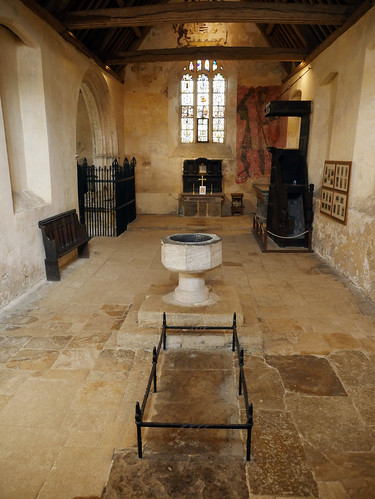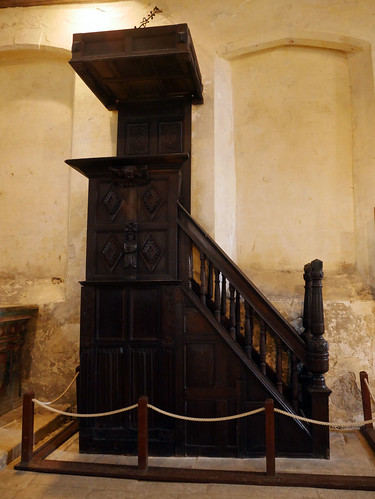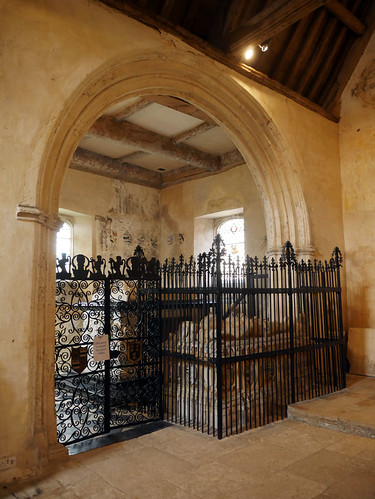The chapel of St Leonard stands in the outer court. It was built as the parish church by Sir Thomas Hungerford between about 1370 and 1383. The small north chapel (dedicated to St Anne) was added in about 1400 to house his tomb.
It became the castle chapel in the 1440s and was further altered in the 16th and 17th centuries. In the 19th century it was used to display the collection of armour and ‘curiosities’ of Colonel John Houlton, then the castle’s owner.
The interior is notable for its many Hungerford family monuments and its wall-paintings. The principal monuments are those of Sir Thomas and his second wife, Lady Joan, with their effigies, which still retain traces of original paintwork and are surrounded by fine later medieval wrought-iron railings; and the lavish 17th-century marble monument to Sir Edward Hungerford III and his wife, Lady Margaret.
Probably between 1658 and 1665, Lady Margaret transformed the north chapel into a shrine for this monument. She added new windows, chequered marble paving, elaborate wrought-iron gates, and an extraordinary scheme of wall- and ceiling paintings, representing a paradise copiously bedecked with Hungerford family heraldry.
The east end of the main chapel displays the remains of earlier wall-paintings, including a nearly life-sized depiction of St George, probably commissioned in the 1440s by Walter, 1st Lord Hungerford.
8 Comments CherryPie on Feb 19th 2021

















I hope you get out and away again soon. You may be getting desperate.
I am quite happy to be sensible and safe to stop the spread of Covid-19.
However I would certainly like to fly further afield soon. And by that I mean just little further afield than walking from my doorstep.
For a small chapel, the family must have been prepared to spend a great deal of their personal money to keep the architecture and decoration up to scratch. The 17th century wrought-iron gates, and the wall- and ceiling paintings, proudly displayed Hungerford family heraldry. I would love to be such a patron today!
It is a wonderful chapel. Full of history and atmosphere.
Oh yes, I remember this mural too.
The last church I visited before Lockdown No 1 was St Agnes on the Isle of Wight.
Yes, the one with thatched roof.
It sounds interesting
Gosh, they don’t make buildings like that anymore!
It is stunning